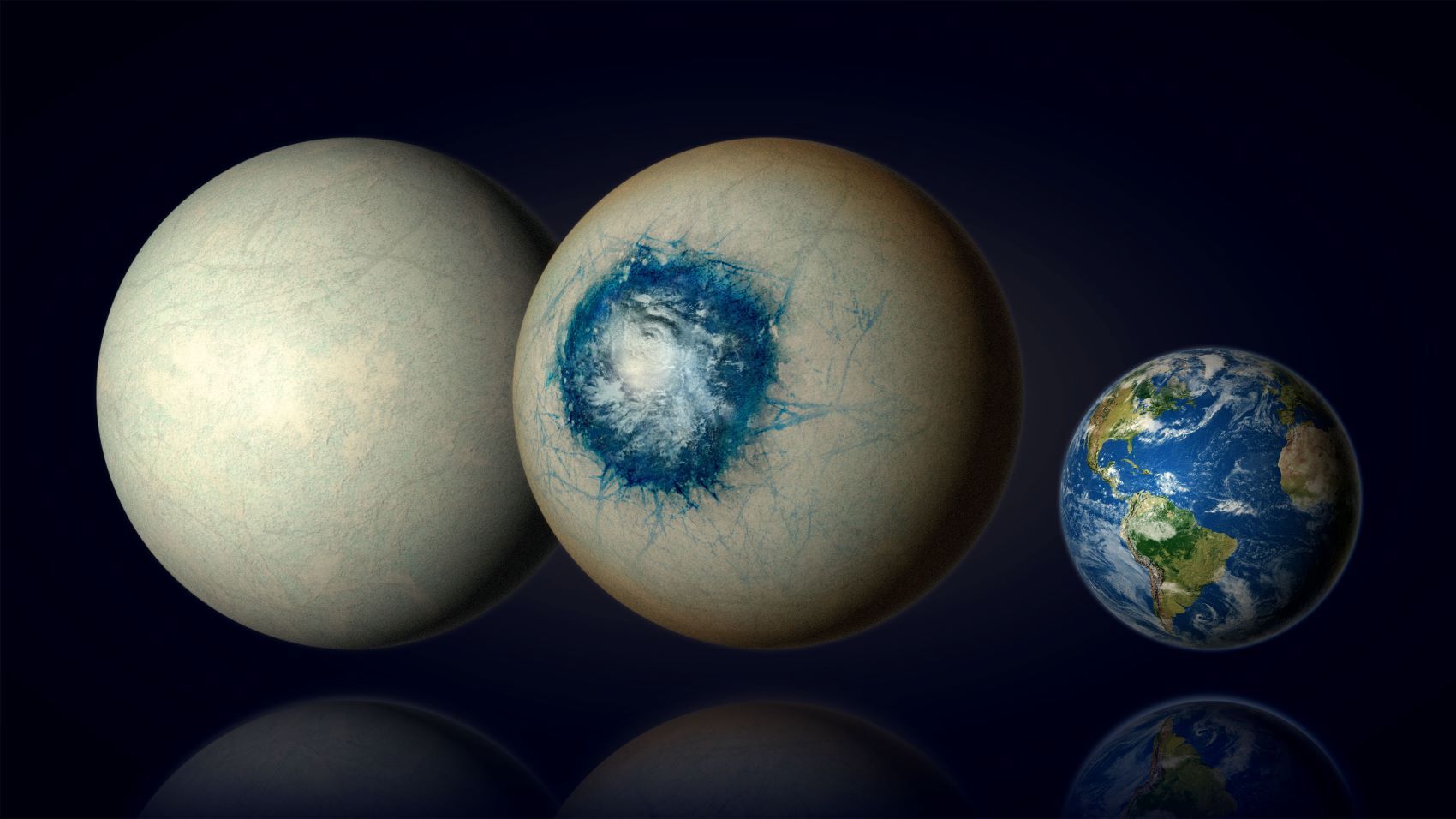Located some 48 light-years from the Solar System, in the constellation of the Whale, the temperate exoplanet LHS1140b had been observed in recent years by the Hubble, Spitzer and TESS space telescopes, as well as by the ESPRESSO instrument on the VLT telescope in Chile.
These observations, on which teams of researchers from France and the Université de Montréal had already collaborated, made it possible to precisely measure the mass and radius of LHS1140b, revealing the planet’s low density. This low density suggests the presence of a thick envelope of hydrogen and helium and/or a significant quantity of water on the planet.
By observing LHS1140b in December 2023, the James Webb Space Telescope (JWST) and its NiRiss instrument (Near-Infrared Imager and Slitless Spectrograph) demonstrated [1] that the planet has now lost its envelope of hydrogen and helium.
This surprising result was confirmed by an independent and simultaneous analysis carried out with another JWST instrument, NIRSpec, operating at different wavelengths to NIRISS.
This implies that the planet’s low density is due to a much greater quantity of water than on Earth [2].

Given the planet’s distance from its star, this water is likely to be at least partly in liquid form [3] The result is the formation of oceans on the planet’s surface and/or subsurface.
This conclusion, which is the first promising result from JWST in the study of potentially habitable planets [4], is published in The Astrophysical Journal Letters.
Future observations should enable us to characterize the chemical composition of the atmosphere of this "super-Earth" type planet, which is 1.7 times larger than Earth and 5.6 times more massive.
The French laboratories working on this study are :
|
Reference
Transmission Spectroscopy of the Habitable Zone Exoplanet LHS 1140 b with JWST/NIRISS. Charles Cadieux, René Doyon, Ryan J. MacDonald, Martin Turbet, Etienne Artigau, Olivia Lim, Michael Radica, Thomas J. Fauchez, Salma Salhi, Lisa Dang, Loïc Albert, Louis-Philippe Coulombe, Nicolas B. Cowan, David Lafreniere, Alexandrine L’Heureux, Caroline Piaulet-Ghorayeb, Björn Benneke, Ryan Cloutier, Benjamin Charnay, Neil J. Cook, Marylou Fournier-Tondreau, Mykhaylo Plotnykov et Diana Valencia. The Astrophysical Journal Letters, le 8 juillet 2024.
[1] To characterize the atmosphere of exoplanets, scientists use the transit spectroscopy method.
[2] If LHS1140b’s rocky composition is similar to that of the planets in the Solar System, water would represent around 10-20% of the planet’s mass (compared with the water in Earth’s oceans, which accounts for around 0.02% of its mass)
[3] In the event that LHS1140b possesses an Earth-like atmosphere, numerical climate simulations show that the surface temperature of this extraterrestrial ocean could reach temperatures of the order of 30 degrees Celsius.
[4] The JWST telescope has been targeting the TRAPPIST-1 planetary system, made up of seven rocky planets of similar size, mass and temperature to Earth, for two years now. Since then, scientists have shown that some of these planets have lost their atmosphere, making the existence of oceans and therefore life on these planets impossible. This is very probably not the case for planet LHS1140b, which, thanks to its mass being five times greater and its gravity almost twice as high, is far more likely to have retained its atmosphere. From this point of view, it is even more interesting to study than the planets in the TRAPPIST-1 system, in the search for habitable planets.
